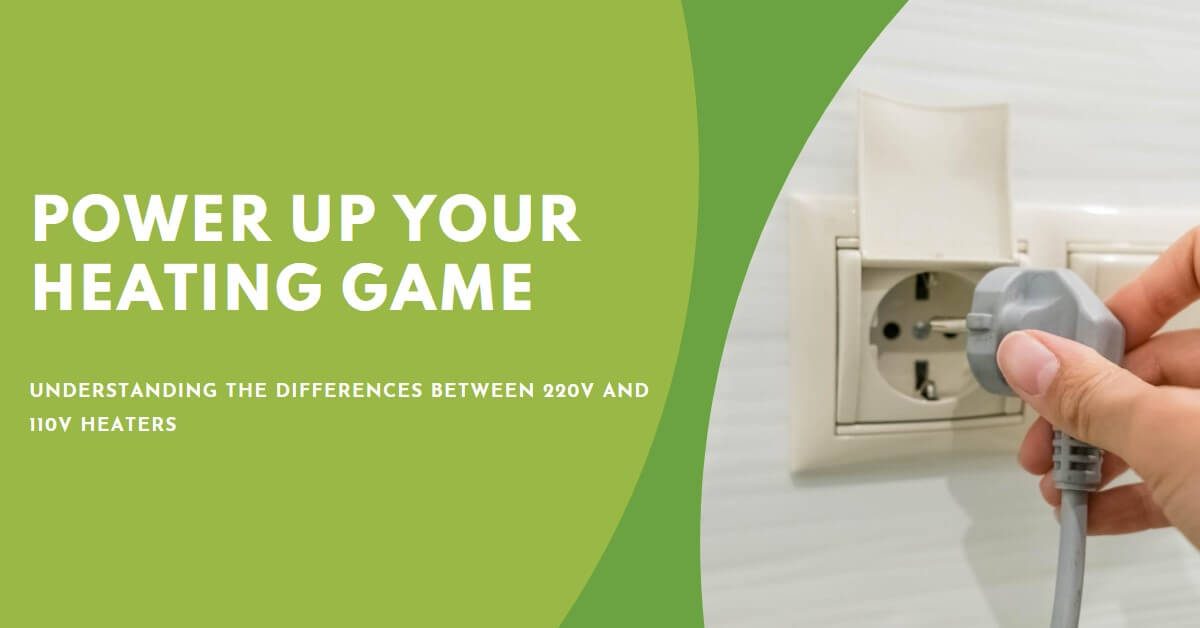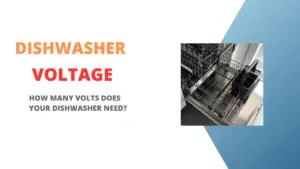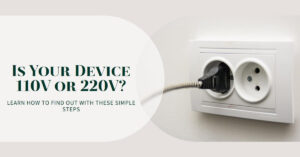Image: “Article Feature Image” by Bing, Source: [Bing Graphic Art].
Heating systems are essential for keeping our homes warm and comfortable during the colder months. However, with rising energy costs, it is crucial to consider the efficiency and cost-effectiveness of different heating options.
One common question that arises is whether it is cheaper to run a 220V or 110V heater. While a 220V heater may have higher operating costs due to increased power consumption, its higher heat output may enable shorter heating cycles, potentially resulting in similar overall costs when compared to a 110V heater.
In this article, we will delve into the differences between these electrical systems and explore their operating costs to help you make an informed decision.
Understanding Electrical Systems
Difference between 220V and 110V
In the United States, residential electrical systems typically operate on either 220 volts (V) or 110 volts (V). The main distinction lies in the voltage supplied to the outlets.
A 220V electrical system utilizes two hot wires and a neutral wire, while a 110V system has a single hot wire and a neutral wire. The voltage affects the power consumption of appliances and, consequently, their operating costs.
Residential Electrical Systems
Most American homes have a standard 110V electrical system, which is suitable for running various appliances and heating devices.
On the other hand, certain appliances, such as electric stoves and clothes dryers, often require a 220V outlet due to their higher power requirements. Understanding the electrical system in your home is crucial for choosing the appropriate heater.
Power Consumption and Energy Cost
The power consumption of a heater depends on its wattage and the voltage it operates on. Higher wattage generally means more heat output.
However, it is important to note that power consumption alone does not provide a complete picture of operating costs.
Energy cost per unit, usually measured in kilowatt-hours (kWh), varies depending on your location and electricity provider.
Considering both power consumption and energy cost is essential to accurately compare the operating costs of 220V and 110V heaters.
Read also my article: Unlocking the Power: Can You Run a 220V Heater on 110V?
Operating Costs of 220V Heater
Energy Requirements of 220V Heaters
220V heaters are often more powerful and capable of providing higher heat outputs compared to their 110V counterparts.
The higher voltage allows these heaters to draw more electricity, resulting in increased heat production. However, this also means that they consume more power, which can impact operating costs.
Calculating Electricity Consumption
To estimate the electricity consumption of a 220V heater, you need to know its wattage rating. This information is typically provided by the manufacturer.
You can then calculate the energy usage by dividing the wattage by 1,000 to convert it to kilowatts (kW) and multiplying it by the number of hours the heater is expected to run.
Estimating Operating Costs
To determine the operating costs of a 220V heater, multiply the energy usage (in kW) by the energy cost per kWh.
This cost can vary depending on your location and electricity provider. By considering the estimated usage hours during the heating season, you can obtain an estimate of the total operating costs.
Factors Influencing Costs
Several factors can influence the operating costs of a 220V heater. The insulation of your home, the desired temperature, and the heater’s efficiency all play a role. Additionally, fluctuations in energy prices and changes in usage patterns can impact the overall cost of running the heater.
Operating Costs of 110V Heater
Energy Requirements of 110V Heaters
110V heaters are typically designed for smaller spaces or localized heating needs. They generally have lower wattage ratings compared to 220V heaters, which means they produce less heat. However, they also consume less power, potentially resulting in lower operating costs.
Calculating Electricity Consumption
Similar to calculating the electricity consumption of a 220V heater, determining the energy usage of a 110V heater involves knowing its wattage and the expected usage hours.
By multiplying the wattage by the usage hours and converting it to kilowatts, you can estimate the electricity consumption.
Estimating Operating Costs
To estimate the operating costs of a 110V heater, multiply the energy usage (in kW) by the energy cost per kWh. This will provide an estimate of the total energy cost for the heating season.
Factors Influencing Costs
Various factors, such as insulation, desired temperature, and heater efficiency, also affect the operating costs of a 110V heater.
Additionally, changes in energy prices and usage patterns can impact the overall cost of running the heater.
Cost Comparison: 220V vs. 110V Heaters
Initial Purchase Costs
When considering the cost of running a heater, it is important to factor in the initial purchase costs. Generally, 110V heaters tend to be more affordable compared to their 220V counterparts.
However, this cost difference may vary depending on the specific models and features.
Installation Considerations
Another aspect to consider is the installation requirements. If your home already has a 220V outlet, opting for a 220V heater would be more straightforward.
However, installing a new 220V outlet can be more expensive and may require professional assistance. In contrast, most homes have standard 110V outlets readily available for 110V heaters.
Long-Term Cost Analysis
To assess the long-term cost-effectiveness, it is crucial to compare the estimated operating costs of both types of heaters over the expected lifespan.
While a 220V heater may have higher operating costs due to increased power consumption, its higher heat output may enable shorter heating cycles, potentially resulting in similar overall costs when compared to a 110V heater.
Energy Savings and Efficiency
Consider the energy savings and efficiency ratings of different heaters. Some models incorporate advanced features like programmable thermostats, which allow for precise temperature control and energy optimization. Energy-efficient heaters can significantly reduce operating costs by maximizing heat output while minimizing power consumption.
Factors Influencing Heater Selection
Specific Heating Requirements
The choice between a 220V and 110V heater depends on your specific heating requirements. If you need to heat a larger area or want a higher heat output, a 220V heater may be more suitable. For smaller spaces or localized heating needs, a 110V heater may suffice.
Availability of Electrical Outlets
Consider the availability of electrical outlets in the area where you intend to place the heater. If there are existing 220V outlets, it might be more convenient and cost-effective to opt for a 220V heater. Otherwise, a 110V heater can be easily plugged into a standard outlet.
Wiring and Electrical Upgrades
If your home lacks the necessary wiring or outlets for a 220V heater, installation may require electrical upgrades. Such upgrades involve additional costs, including hiring an electrician and purchasing the required materials. Assess the feasibility and associated expenses before making a decision.
Regional Energy Costs
Energy prices can vary depending on your location and the local electricity provider. Researching and comparing energy costs in your region can help you make a more accurate cost assessment when choosing between a 220V and 110V heater.
Other Considerations
Safety Concerns
When using any heating device, safety is paramount. Ensure that the heater you choose meets safety standards and includes features such as overheat protection and tip-over switches. Adhere to manufacturer guidelines and exercise caution to prevent accidents or potential hazards.
Maintenance and Repair Costs
Regular maintenance and occasional repairs are part of owning a heater. Some models may have higher maintenance or repair costs due to complex mechanisms or specialized components.
Research the maintenance requirements and potential repair costs associated with the heaters you are considering.
Conclusion
When deciding between a 220V and 110V heater, it is crucial to consider various factors such as initial purchase costs, operating costs, installation requirements, and specific heating needs.
While 220V heaters often have higher power consumption, they can provide greater heat output for larger spaces.
On the other hand, 110V heaters are generally more affordable and suitable for smaller areas. Assessing energy costs, efficiency ratings, and safety features will help you make an informed decision tailored to your requirements and budget.



